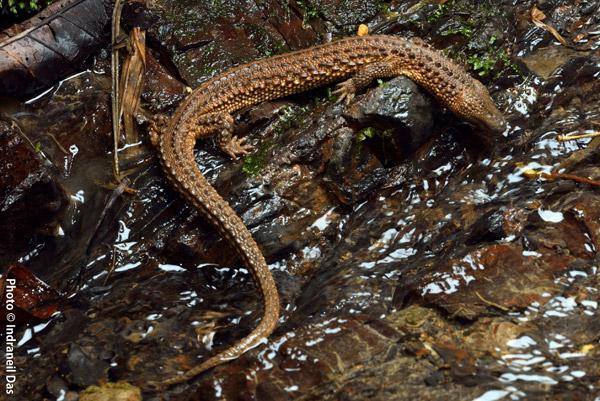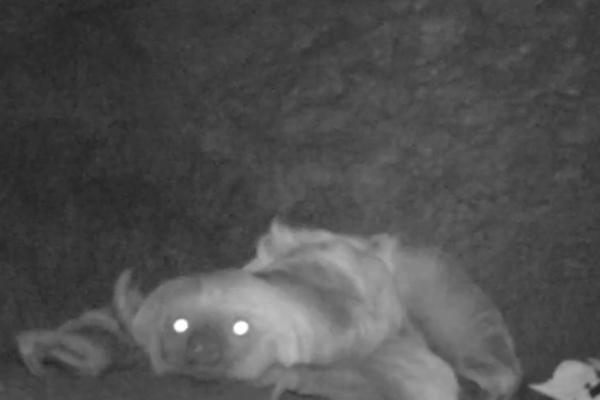Only found on the island of Borneo, the earless monitor lizard (Lanthanotus borneensis) is so distinct from any other lizard that that it’s the sole member of its family, Lanthanotidae. It is also rarely seen--despite being discovered in 1878--due to underground and nocturnal habits. Around 20 centimeters long (8 inches), the animal lacks any external ears--hence its name--and sports stout limbs and beady eyes with a translucent window covering the lower half.
“These are all thought to be adaptations to a subterranean lifestyle,” reads the TRFFIC report entitled Keeping an ear to the ground: monitoring the trade in Earless Monitor Lizards, which adds that “its morphology links it to a 70 million year old fossil from Mongolia hence it is sometimes referred to as a living fossil.”
But it’s this very unusualness that appear to have made the species a sudden collector’s item for reptile-lovers willing to break the law. The lizard started to show up in social forums in 2012 and since then TRAFFIC believes there has been a spike in illegal collecting. In fact, the organization has been tipped off that 40 individuals were stolen from the wild just this spring. If true, that’s three times as many individuals as were recorded in the first 80 years since scientists discovered it.
“Our research highlights the importance of the Internet and social media in the trafficking of species in high demand by specialist collectors: the reach online traders have is both instant and global,” said report co-author Sarah Stoner, Senior Wildlife Crime Analyst at TRAFFIC.
The group has documented earless monitor lizards illegally for sale in Japan, the Ukraine, France, Germany, and the Czech Republic.
“Intelligence information shows that earless monitor lizards are being actively targeted by a small but prolific group of collectors/traders who use trusted couriers to collect and smuggle individual reptiles out of Borneo,” reads the report. “At least two of these couriers from the group are known to have previous convictions after attempting to smuggle reptiles from their range states.”
This trend is hugely concerning for a species about which almost nothing is known. In fact, the earless monitor lizard hasn’t even been evaluated by the IUCN Red List, which determines how imperiled a species is. TRAFFIC believes the species would at least be considered Vulnerable, if not Endangered, “on the basis of its small area of occupancy, its fragmented distribution with fewer than 10 known locations, and, because of ongoing deforestation,” according to the report.
Currently the species is legally protected in all the countries in which it is found--Malaysia, Indonesia, and Brunei--making any trade illegal.
“Earless monitor lizards existing outside range countries have all been obtained illegally. Parent stock has been illegally obtained, stolen from range countries, and therefore, by extension, the offspring of these animals are illegally sourced,” reads the report, which adds that penalties across the three range states range from one year in prison and $1,600 fine in Brunei to five years in prison and a fine of $8,600 in Indonesia.
TRAFFIC recommends that the international community add the earless monitor lizard to Appendix I of the Convention on International Trade in Endangered Species, which would bar any cross-border trade worldwide. Furthermore, the group recommends efforts to seize any of the traded specimens with the possibility of releasing them back in the wild.
“Maintaining a healthy population in those few locations on Borneo is paramount to lessen any impact illegal takings may have already had,” reads the report.
This article was originally written and published by Jeremy Hance, a contributing writer for news.mongabay.com. For the original article and more information, please click HERE.




